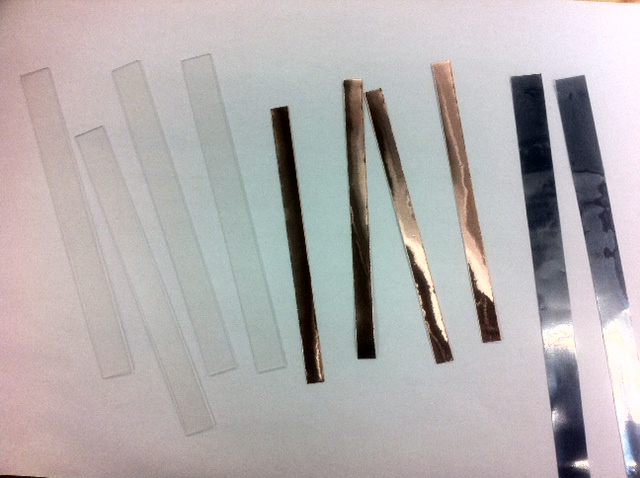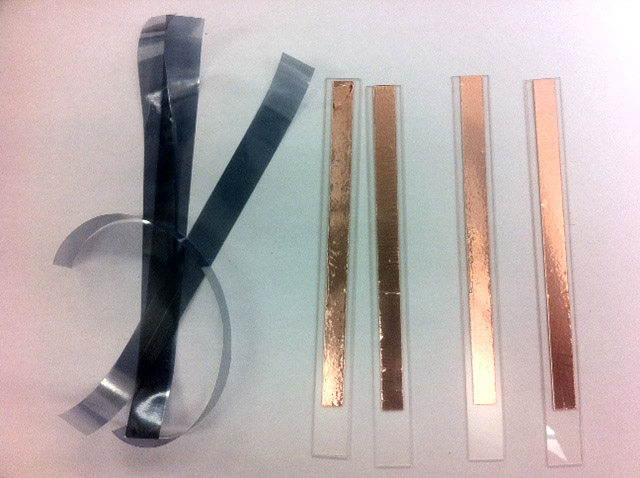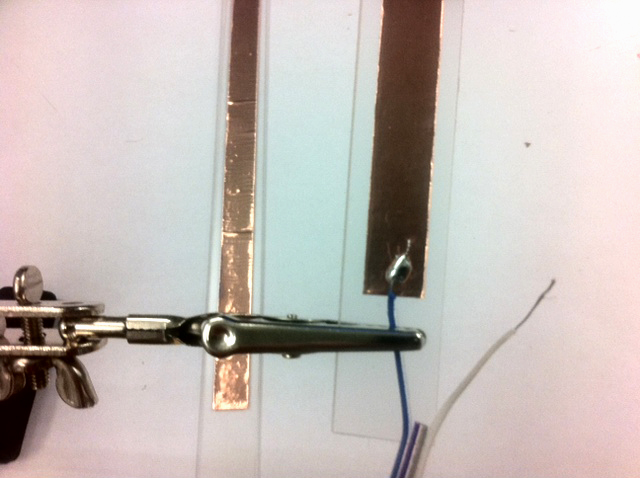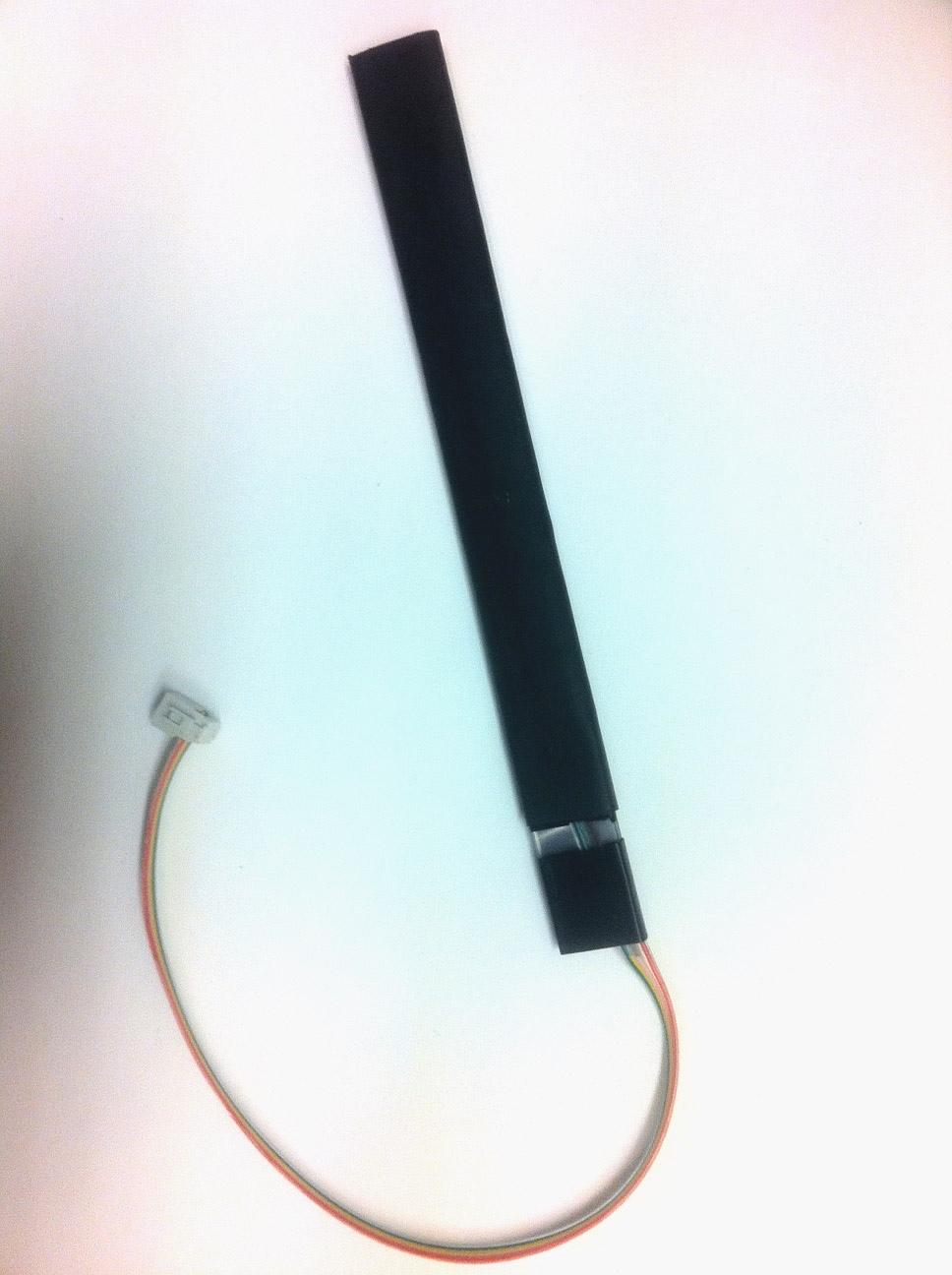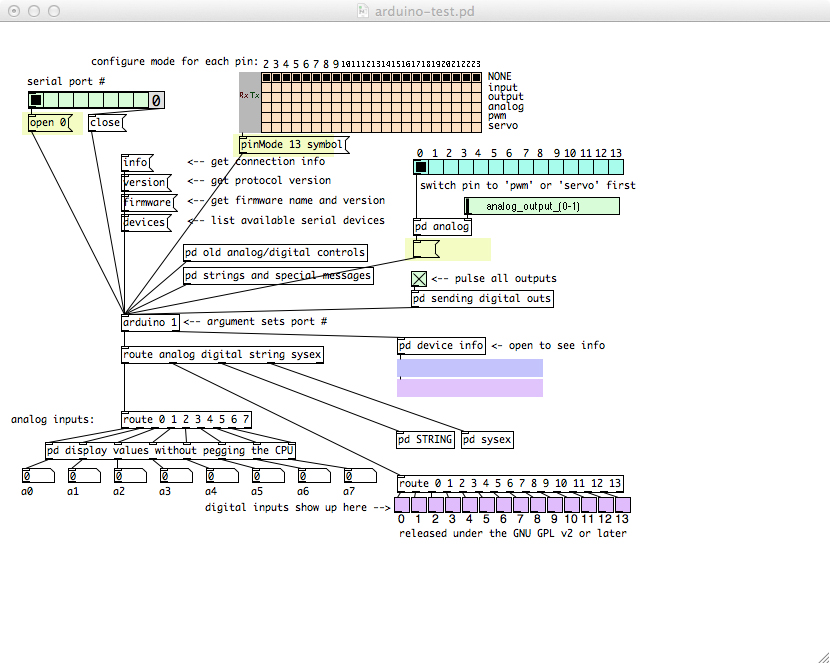Heading into the home stretch of the semester, my attention was split in a few directions this week. First, I began to work with Pure Data / Pd, a real-time sound synthesis and control interface. I coupled this with my first pass at making my own sensors, which in this case were a pair of flex sensors based on the TX/RX step-response circuit. There is a great set of directions on the Instructableswebsite.
Bi-Directional Flex Sensors
Flex Sensor + ProcessingPure Data
It may look like Grasshopper, but Pure Data is much more raw. Though there are a number of modules already available online, the inner complexity of these make them almost more difficult to use. Example: linking Pd with an Arduino is supported with several applications, but I struggled to send any data back and forth. No success unfortunately. Looking ahead I still think Pd is the right choice for producing sound content for my final project. Unlike Processing, Pd allows you to make changes to code and control hardware in real-time, as well as making it possible to run multiple applications simultaneously. I didn't succeed in linking the flex sensors to Pd last week and will have to troubleshoot serial communication between the Fabduino and Pd this week if I plan on using this level of sound synthesis for my final project.
What I'm interested in doing is creating a series of binaural channels - essentially sound waves that oscillate at frequencies that are just out-of-sync, creating a spatial rippling effect. I wanted to use the flex sensor to control the frequency-shift of the 440khz channel in this example. Just something to troubleshoot in the coming days.
FirmataWhile I was trying to get the Pduino module to run, I was introduced toFirmata - which is essentially a kind of all-purpose generic driver, linking micro-controllers with software running on a computer. There are not many examples of Firmata code online that we can adapt, bu it does offer generate a fantastic test module that allows for the control and testing of every pin on a micro-controller. If you think you may have fried your ATMega 168, give this a try.
